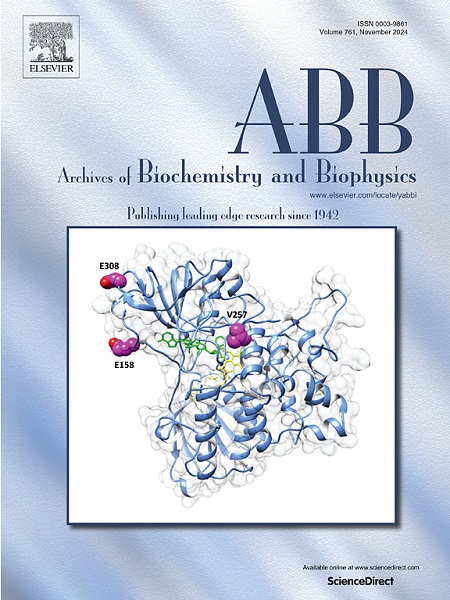Tools to investigate oxygen-related challenges with flavin-dependent enzymes
IF 3
3区 生物学
Q2 BIOCHEMISTRY & MOLECULAR BIOLOGY
引用次数: 0
Abstract
Enzymes have multiple applications in medicine but during the past decades interest in the application of enzymes as (bio)catalysts to produce a wide range of valuable molecules in various industries has increased. Many chemical compounds (from pharmaceuticals to bulk commodities) can be produced by a series of enzymatically-catalysed chemical steps, and in many cases one of these steps is an oxidation.
The use of molecular oxygen as an oxidising agent in biocatalytic processes is a double-edged approach. From one side, the oxygen is supplied to the reactor in the form of air bubbling, which is cheap, highly available and non-toxic. From the other side, bubbling air into the reaction media creates a gas-liquid interface which adsorbs enzymes and compromises their stability. Moreover, the oxygen is quite insoluble in water, which often results in oxygen-limited reactions.
These aspects are the main limiting factors for the stability and kinetics of enzymes that perform oxidative biocatalysis and prevent the reaction from happening at a rate that is high/competitive enough for industrial feasibility. Therefore, we need systems to mimic and understand better these factors to try and mitigate their effects upon scale-up.
In this review, we present two complementary systems to study these factors: one apparatus that ensures a constant gas-liquid interface and another one that maintains a constant oxygen partial pressure. Both can provide highly valuable information regarding the maximum rate of reaction and about the deactivation profiles of enzymes in the presence of bubbles.

利用黄素依赖酶研究氧相关挑战的工具。
酶在医学上有多种应用,但在过去的几十年里,人们对酶作为(生物)催化剂在各种工业中生产各种有价值分子的应用越来越感兴趣。许多化合物(从药品到大宗商品)可以通过一系列酶催化的化学步骤生产,在许多情况下,其中一个步骤是氧化。在生物催化过程中使用分子氧作为氧化剂是一种双刃剑的方法。从一侧,氧气以鼓泡空气的形式供给反应器,这种方式廉价、易得且无毒。从另一边,冒泡的空气进入反应介质,形成气液界面,吸附酶,破坏酶的稳定性。此外,氧不溶于水,这常常导致限氧反应。这些方面是进行氧化生物催化的酶的稳定性和动力学的主要限制因素,并阻止反应以足够高/有竞争力的工业可行性的速度发生。因此,我们需要系统来模拟和更好地理解这些因素,以试图减轻它们在扩大规模时的影响。在这篇综述中,我们提出了两个互补的系统来研究这些因素:一个确保气液界面恒定的装置,另一个保持恒定的氧分压。两者都可以提供有关最大反应速率和气泡存在时酶的失活概况的非常有价值的信息。
本文章由计算机程序翻译,如有差异,请以英文原文为准。
求助全文
约1分钟内获得全文
求助全文
来源期刊

Archives of biochemistry and biophysics
生物-生化与分子生物学
CiteScore
7.40
自引率
0.00%
发文量
245
审稿时长
26 days
期刊介绍:
Archives of Biochemistry and Biophysics publishes quality original articles and reviews in the developing areas of biochemistry and biophysics.
Research Areas Include:
• Enzyme and protein structure, function, regulation. Folding, turnover, and post-translational processing
• Biological oxidations, free radical reactions, redox signaling, oxygenases, P450 reactions
• Signal transduction, receptors, membrane transport, intracellular signals. Cellular and integrated metabolism.
 求助内容:
求助内容: 应助结果提醒方式:
应助结果提醒方式:


